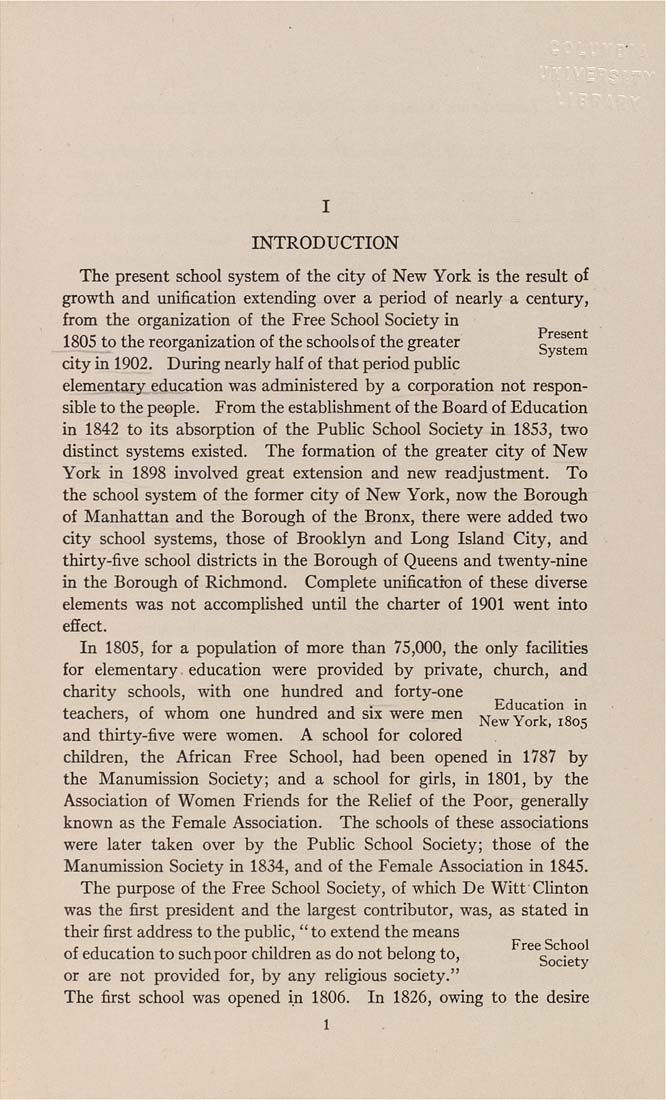INTRODUCTION
The present school system of the city of New York is the result of
growth and unification extending over a period of nearly a century,
from the organization of the Free School Society in
1805 to the reorganization of the schools of the greater g .
city in 1902. During nearly half of that period public
elementary education was administered by a corporation not respon¬
sible to the people. From the establishment of the Board of Education
in 1842 to its absorption of the Public School Society in 1853, two
distinct systems existed. The formation of the greater city of New
York in 1898 involved great extension and new readjustment. To
the school system of the former city of New York, now the Borough
of Manhattan and the Borough of the Bronx, there were added two
city school systems, those of Brooklyn and Long Island City, and
thirty-five school districts in the Borough of Queens and twenty-nine
in the Borough of Richmond. Complete unification of these diverse
elements was not accomplished until the charter of 1901 went into
effect.
In 1805, for a population of more than 75,000, the only facilities
for elementary education were provided by private, church, and
charity schools, with one hundred and forty-one
,1 ru I.JJJ' Education in
teachers, of whom one hundred and six were men jvjewYork i8o^
and thirty-five were women. A school for colored
children, the African Free School, had been opened in 1787 by
the Manumission Society; and a school for girls, in 1801, by the
Association of Women Friends for the Relief of the Poor, generally
known as the Female Association. The schools of these associations
were later taken over by the Public School Society; those of the
Manumission Society in 1834, and of the Female Association in 1845.
The purpose of the Free School Society, of which De WittClinton
was the first president and the largest contributor, was, as stated in
their first address to the public, " to extend the means
of education to such poor children as do not belong to, ^^Societv
or are not provided for, by any religious society."
The first school was opened in 1806. In 1826, owing to the desure
|








